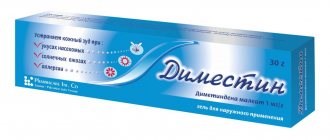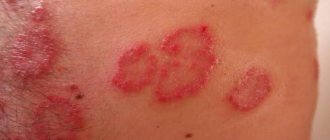Keeping a food diary is a good way to independently determine the presence of allergic reactions to certain foods. The point is to record, systematize and then find correspondence between the food eaten and the manifestation of allergy symptoms. People who have at least once noticed a strange reaction of their body to any foods should start keeping such a diary.
What is a food diary for allergies?
The definition of a food diary includes any notebook or notebook where a person trying to identify an allergy writes down his entire daily diet, medications taken (subject to prescribed treatment) and their effect.
It is not necessary to adhere to a strict recording format, but certain data must be entered. So, the most important information that should be recorded is^
- composition of dishes;
- meal times;
- change in well-being;
- the nature of the symptoms that appear.
It must be remembered that the body's allergic response occurs in the first 2 hours after consuming the product; a double reaction (weak within an hour, maximum after 4-6 hours) and delayed (after 6-8 hours) is rarely observed. Due to the fact that allergies can vary in intensity, any deviations from the norm must be taken into account during the assessment.
Comparing the timing of the appearance of certain symptoms and food intake allows you to identify the allergen. To clarify, the product that allegedly caused the reaction is excluded for 2-3 days and, after the signs of allergy disappear, are reintroduced. Resumption of symptoms indicates the need to exclude this product from food.
In addition, constant keeping of a food diary helps to assess the effectiveness of the therapy. In the absence of positive dynamics of treatment, the drugs are replaced with others or the dosage is adjusted.

Sample of filling out a food diary
Accurately recording the necessary information in a food diary will help to identify allergies in a timely manner. For competent and effective recording, you should adhere to the following recording form:
| Date Time | Products, quantity | Medicine, dosage, time of administration | Observed allergic reactions | Time of onset of the allergic reaction | Note |
| 09.08.18 09.00 | Buckwheat porridge with milk, 200 gr., black tea, sandwich with butter and sausage. | Suprastin, 1 tab. At 10.00 | Itchy rash on the back of the hand | 10.35 | After taking Suprastin, I have a severe headache. |
Radish allergy: causes, symptoms and treatment
When the body reacts inappropriately to a familiar food by producing antibodies to it, a food allergy develops. It mainly manifests itself in protein foods, since it is the protein that contains the amino acid histidine, from which histamine is released, which provokes allergic symptoms.
Radishes are mildly allergenic vegetables; cases of an inadequate reaction to them are extremely rare. The cause of the disease can only be its bright red color. In addition, early spring plants contain high concentrations of nitrates, which can cause health problems.
Signs of allergens in the body:
- The lips and oral cavity swell and itch, and symptoms may spread to the throat.
- Irritation of the gastrointestinal tract occurs: colic, vomiting, diarrhea, nausea.
- The appearance of small pimples on the skin, red flaky spots that itch.
- Possible nasal congestion, cough, difficulty breathing.
These symptoms may not appear immediately; sometimes the results appear only after a couple of days. It is possible that the cumulative effect of a substance may occur, when in small quantities the root vegetable does not have any negative effect, but when eaten in large quantities, it “comes out” with red spots, swelling and itching.
Diagnostics
The tendency to allergic reactions can be hereditary. Moreover, it is the predisposition of the immune system to pathological actions that is transmitted, and not a specific allergen.
Therefore, the presence of allergies in your family should be reported to the doctor at the appointment. To clarify the diagnosis, the following studies are carried out:
- Scarification - an extract of the suspected allergen is dropped into a scratch on the skin and the presence of a reaction is observed.
- Blood serum analysis for immunoglobulins.
- Radioallergosorbent test - a sample of the patient’s blood is mixed with possible allergens.
- The patient is advised to keep a food diary.
You also need to be examined by a gastroenterologist to rule out giardiasis, gastritis, and cholecystitis.
Treatment
Rules of conduct
Filling out a diary daily is important if it is necessary to identify dangerous allergens that have a detrimental effect on the body. A food diary for allergies in a child or adult should be kept according to the following requirements:
- Detailed information about diet is required. Enter on the notebook pages not only general information about the dishes eaten, but their exact composition: ingredients, method of cooking, additives, etc. If the diet includes finished products, also write down the name of the manufacturer, date of manufacture and expiration date.
- You also need to enter information about the amount of food eaten in the notebook. It is not necessary to weigh each portion - approximate values (+-20 grams) are enough. Some allergens, when consumed even in small doses, can cause serious allergic reactions.
- An additional column should be reserved for recording various factors that could also affect your well-being: weather, vaccinations, past illnesses, etc.
- It is worth keeping records for at least one month, gradually changing the composition of the diet so as to cover as wide a range of foods as possible.
- Mothers keeping a food diary for their baby should also record their diet in detail if breastfeeding is used to feed the baby. Any systematic change in how you feel after eating a specific food may be a symptom of an overreaction.
Records should be kept throughout the entire period of allergy diagnosis, its treatment, and also for 1-2 years after the disappearance of the last symptoms. If similar clinical symptoms recur, the diary will help identify the allergen and promptly begin treatment or adjust current therapy.
How to identify food allergens in a baby?
In order to begin diet therapy, it is necessary to understand what foods the child has an “incorrect” reaction to, as doctors say, “to identify causally significant allergens.” But how to do this? The most reliable methods are allergy tests, including the “skin test” method. But the doctor will get the most information from asking parents about what the child is fed, how the allergic reaction manifests itself and how long it lasts. And the doctor will definitely ask you to keep a “Food Diary” - a detailed description of the baby’s daily diet, his reaction to what he eats and changes in his well-being.
Example of a “Food Diary”
Rules for keeping a “Food Diary”
What should be noted in this diary: • Date and time of breakfast, lunch, dinner and all snacks; • A list of foods that the child ate, indicating the reactions that followed after eating; • Duration and intensity of manifestations of these reactions; • Note all changes in the skin, as well as disorders of the respiratory system (if a runny nose suddenly appears, or the baby starts coughing, or shortness of breath appears); • Record what time of day and what medications were used; • For ointments and medicinal creams, indicate the consumption and place of application.
But the most important thing is to keep a “Food Diary” in detail and constantly, not missing a single piece of food eaten even by accident. Sometimes it seems that a small amount of a “forbidden” product cannot harm the child. This is completely misleading! Even small amounts of allergy-causing foods can completely undo the efforts of several months. The body needs at least 3 weeks to recover from an allergic reaction.
A “food diary” should definitely be kept for 2-4 weeks before starting diet therapy, which will be prescribed by a doctor (pediatrician, allergist, nutritionist) based on these records. As a rule, diet therapy begins during the period of remission and is not combined with the use of new medications, including external use. After starting treatment, continue to keep your Diary as clearly and in detail.
Is diet alone enough to control the course of atopic dermatitis?
Many parents consider diet as the main treatment for an atopic child, perhaps because it is the easiest to influence. It also allows parents to have some sense of control over their child's illness. However, the relationship between diet and the course of atopic dermatitis is quite complex and ambiguous, and can create as many problems as it tries to solve.
One important rule must be remembered: the diet must remain complete, that is, contain a sufficient amount of proteins, fats and carbohydrates, as well as vitamins and minerals for the normal development of the child. The “food diary” helps to identify foods that are undesirable for the child and create a correct and balanced diet.
Every mother of a child suffering from allergies has probably come across the concept of a “food diary”. But not all parents know why they need to keep a food diary and how to do it correctly.
What is a food diary?
A food diary is a notebook or notebook in which the mother keeps track of the foods eaten by the baby during the day and reflects all the unusual reactions and manifestations that arise in the child during this period.
Mom can choose any convenient form for keeping a food diary. Recently, electronic diaries that can be kept on the Internet have become widespread.
It should be noted that food allergies can be caused by foods consumed by a nursing mother, so if the child is breastfed, a similar diary should be kept by the nursing mother.
Mandatory sections of the food diary are the date and time of feeding, the type of food, the approximate amount of food eaten, all unusual reactions and changes in the child’s well-being (skin manifestations, changes in the nature of the stool or the emotional state of the child), and the time of their occurrence.
Keeping a food diary is necessary for all children suffering from allergies. Properly made notes will help parents identify the allergen in a timely manner and eliminate it from the baby’s diet.
Rules for keeping a food diary
Keeping a food diary is a responsible matter and requires self-discipline and patience from the mother. During the period of time determined by the pediatrician or allergist, the mother must accurately and methodically record in her diary all the foods consumed during the day, as well as record all changes in the baby’s well-being throughout the day. It is important to understand that only complete and reliable information entered in the diary can help the doctor in identifying causally significant food allergens that cause unwanted reactions in the baby. A food diary can be informative only if the following conditions are met:
- entries must be made daily without interruption, recording in detail in the diary absolutely all the foods and liquids the baby receives during the day during the main meals and snacks; even a small piece of carrot that the baby stole from the table is important here while the mother was preparing soup or dry food , eaten during a walk. In the “Type of product” column, it is also necessary to indicate the composition of the dishes and the features of their culinary processing (raw, boiled, baked, etc.). In the case of consuming a finished product, for example, store-bought baby cottage cheese or yogurt, it is advisable to also indicate the manufacturer of the product, since even products of the same name from different manufacturers can cause different reactions in the baby;
— in the “Quantity” column the approximate volume of food eaten is indicated. This is important because the adverse reaction may not occur when consuming a small amount of the product (for example, 1-2 teaspoons) and may occur after consuming a larger amount;
— for convenience, it is advisable to divide the “Changes” column into 3 parts. In the first part, describe the manifestations on the baby’s skin (rashes, swelling, itching, their severity and localization), as well as respiratory dysfunction (runny nose, sneezing, coughing, difficulty breathing), if any. In the second part, note the reaction to the product from the child’s digestive organs: regurgitation, vomiting, colic, flatulence, the nature of the change in stool. In the third part, changes in the child’s general condition and behavior in response to the introduction of new food should be indicated (anxiety, moodiness, sleep disturbance, increase in body temperature, etc.) It is also necessary to record the time of manifestation of a particular reaction of the body to the product, for example , rashes on the cheeks may appear immediately after eating or after a few hours;
— in the “Notes” column, additional factors should be indicated (taking medications, administering a vaccine, changing the usual environment) that could affect the child’s condition and well-being and themselves provoke one or another undesirable reaction. You can also record suspected food allergens and other relevant information here. In this column you can also indicate the child’s weight (it is advisable to measure no more than once a week);
— the duration of keeping a diary should be at least two weeks, and if necessary, for a month or more. Only with such a duration of observation is it possible to identify with a high probability a cause-and-effect relationship between the manifestations of allergies in a child and a certain food product. Short-term recordings (within 1-2 days) do not provide any valuable information;
— entries in the diary are kept taking into account the diet prescribed by the doctor. If a connection is identified between a certain product and the manifestation of allergic reactions, the suspected product is temporarily excluded from the child’s diet until the symptoms of exacerbation subside, after which the potentially dangerous product is again given to the child once in a small amount on an empty stomach. Resumption of symptoms confirms the causative role of this product in the development of adverse reactions. In this case, the unwanted type of food is excluded from the baby’s diet for a certain period of time (it is determined individually by the doctor), and the unwanted product is marked in red in the diary;
— allergens can only be identified if the range of products is properly expanded. The simultaneous introduction of more than one new product is not recommended. Otherwise, identifying a dangerous allergen will be much more difficult, since it is difficult to assess the reaction when consuming several products at the same time, as well as combined types of food. It is necessary to introduce a new product into the diet of a nursing mother or baby gradually, initially in a minimal quantity, while it is advisable to introduce the child to a new product in the first half of the day. This makes it possible to assess the tolerability of each new product and promptly identify the allergen. In the absence of undesirable reactions, the next product is introduced no earlier than 3 days later. If any manifestations of intolerance occur, you should stop using the new product, write down the symptoms and contact a specialist. The next new product can be introduced only after all symptoms have completely disappeared;
— you should not combine the introduction of a new product with taking a new medicine, or introduce your baby to new foods during the vaccination period.
A well-filled food diary allows you to systematize information about the baby’s nutrition, assess his character and identify violations, identify foods, as well as their combinations or individual ingredients to which the child is hypersensitive, and select a balanced diet for the baby and nursing mother, taking into account individual characteristics.
The food diary of an allergy sufferer should contain the following information:
- an accurate description of the product eaten;
- quantity;
- time of use;
- description of the reaction;
- medications that were used;
- if possible, a description of the condition without consuming the suspicious product.
Food diary data provides unique information about what product an allergic person, be it an adult or a child, reacts to and how. Keeping a food diary allows you to systematize knowledge about your own immune system, detect allergens and get rid of them.









